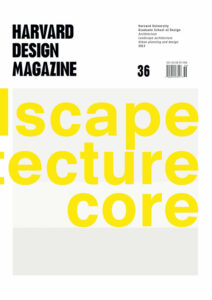Substance and Structure I: The Material Culture of Landscape Architecture
In his 1995 volume, Studies in Tectonic Culture, Kenneth Frampton examines the dialectic between form and the processes and materials associated with its making.1 Frampton’s text posits a tectonic reading of design—or the study of the expressive potential of constructional technique—as a type of resistance to architecture’s commodified image. His insistence on the relationship between building and ground and how things are built is particularly germane to examining the unique methods and materials through which landscapes are made. In contrast to the types of structures that Frampton studies, landscape architecture, with its earth-based techniques of land forming, intrinsically enmeshed living materials—and above all the visual and material likenesses between designed and found landscapes—evades analysis in these terms.
While the definition of tectonics assumed in Frampton’s text refers to the human act of building or joining, traced to the Greek tektonikós, a second definition, popularized in the 1960s with the development of plate tectonic theory, describes the structure of the earth’s surface in relation to the large-scale, long-durational processes that form it. The latter credits the productive forces of the earth with the distribution and deformation of geogenic materials at multiple scales.2 This second definition affords a consideration of a fundamental aspect of the material culture of landscape architecture: While shaped with design intention, landscapes are pre-conditioned, tempered, and altered by on-going action outside of human control. The contiguity of designed landscapes with the forces and actants of the geological and biological world produce non-linear relationships between landscape structure and expressive form, calling for a revision of Frampton’s concept of the tectonic for the discipline of landscape architecture.
A century and a half of meticulously documented planning, construction, and observation of New York’s Central Park serves as an exemplary, long-term case for examining the processes of landscape building, use, and maintenance. Frederick Law Olmsted and Calvert Vaux dictate the proper sequence of building in an 1858 report: First—heavy grading and drainage systems; second—soil deepening and enrichment; third—roads and walks; fourth—tree and shrub planting; and fifth—buildings, walls, and gates.3 Following this construction sequence, this paper proposes five aspects integral to defining a tectonics for landscape architecture: the role of non-human forces in the making of form, the illegibility of the ground, the coalescence of extant and introduced materials, the dynamics of living materials, and finally the on-going energetic inputs of maintenance regimes.
Geological Tectonic
“Situated at the interface of culture and nature, building is as much about the ground as it is about built form. …[It] is as much about the topos as it is about technique.” With these concluding statements, Frampton emphasizes architecture as the “building the site” over the making of autonomous objects.4 This notion of site, however, can be understood as given and atemporal. Designed landscapes such as Central Park, in contrast, are inextricable from their geological substrate—and the definitively temporal episodes associated with their making. The first annual report of Central Park published in 1857, begins with Egbert Viele’s exhaustive description of the site’s existing topographic and geological conditions.5 The illustrative section of the park site between 5th and 8th Avenues adopts the graphic language of the contemporaneous geological sciences, drawing the underlying gneiss and “violent dislocations” by granitic intrusions, overlaid with glacial drift.6 The report catalogues bedrock types, both as the structural core of the park and as extractable dimensional stone, identifying grey and interlaminated gneiss as most suited for cutting and finishing. Vastly different timescales and productive forces are synchronically evident in the construction of landscapes. Contiguous processes from glacial deposition to the reorganization of rock into walls, bridges, and buildings by teams of masons form the site’s temporal, tectonic expression.
Illegibility of the Ground
Frampton traces Gottfried Semper’s elegant distinction between the light, joined frame—the tectonic—and the heavy, cut and piled-up earth materials—the stereotomic. The landscape architect’s act of landforming is often thought of as representatively stereotomic, but it is more an act of assembling and weaving than stacking and sculpting. Underlying bedrock, soils, infrastructure, and the biotically active rhizosphere form complex assemblies that deceptively read as a singular “ground.” While in Frampton’s terms, “tectonic” is reserved for the legible and expressive assemblage of joined units—thereby excluding most earthwork—he remarks that some types of masonry, when bound in coursework, are “also a form of weaving.”7 It is in this sense—of interwoven, variable, growing assemblies—that the top three feet of the undulating ground surface of Central Park are best described. One hundred and fifteen miles of sewer lines, tile drains, and iron and cement water pipes were laid in a sloping matrix of differentially graded aggregates during the first five years of the park’s construction. Sub-soils of varying composition were installed throughout in lifts of one to three feet according to the root systems of scheduled shrubs and the small or large trees that would later cohere the surface. The gravel roads and walks traversing the park’s surface conceal tightly packed, rhomboidal, paving stones that increase load bearing capacity and prevent “slimy” and “rutty” surfaces. Far from being carved from a solid homogeneous mass, the ground is assembled of differentially permeable, intricately bound systems, which characterize its resistance to water, gravity, load, and wind.
“It is worthy of remark, that this extent of work, which performs so essential a part in the successful improvement of the Park, and, in developing its attractions, is wholly underground and hidden from observation.”8 William H. Grant, Central Park’s Superintending Engineer, notes the intentional disconnect between the observed and experienced understanding of water flow that the sub-surface drainage produces. While this agenda is essential to the park’s design with its mimesis of pastoral and woodland forms, and one actively resisted in contemporary practice concerned with articulating the artifice of landscape—the illegibility of the constructed ground remains an intrinsic dimension of many landscape architecture projects. Not only does the presence of soil and vegetation trigger assumptions of remnant natural conditions, the visible impacts of invisible systems occur in non-adjacent space or non-immediate time. Though subgrade systems may be invisible, the expression of their assembly is revealed above the surface through the density and expanse of the tree canopy, the orchestration of wetness and dryness, and the friability or cohesion of slopes.
Extant/Introduced
The materials of landscape architecture range from those sourced and supplied across great distances to those derived from or grown on site. Anything that can be strategically distributed, re-processed, or cultivated within the site offsets the need for bringing materials in from outside. Commodities not available from within Central Park were supplied by local vendors, while others came from further afield—extending as far as New Brunswick (brownstone) and Michigan (pressed brick), and fluctuating according to unstable labor wages and access to transport. The basic components of landscape construction, soil, stone, wood, concrete, and vegetation—which appear in a less manufactured form than many architectural building materials—are mutable and defy formal autonomy: pavement and stone can be crushed, wood can be chipped, and vegetation can be composted. As continued material cycling occurs throughout the life of a project, the distinction between that which existed and that which is introduced disappears. That sites are both legal boundaries but also intrinsic material reserves means that historical land uses are expressed at a chemical level. Legacies of soil modification or contamination, while invisible to the eye, prompt landscape strategies that arrest or exploit time: capping or diffusing, attenuation or remediation, or complete displacement of toxic soil. Along with the eviction of some 1,600 people,9 multiple piggeries, offal vendors, and market gardens, “from which streams of fertilizing matter [had] escaped,”10 were demolished between 1856 and 1857 in preparation for the construction of Central Park. Decades of accumulated, discarded animal and plant waste had substantially increased the organic content in the soil in multiple locations of the future park. Identifying the economic benefit of this inheritance, Olmsted ordered the mapping, “mucking,” and redistribution of the nutrient rich soil to poorer soils—this highly manufactured, anthropogenic material was folded back into and consumed by the soil.
Living Tectonics
Living materials—trees, shrubs, and herbaceous plants that bind the soil or other growing media in terra firma, on walls, or elevated surfaces—constitute the living tectonics of landscape architecture. Plants often constitute the dominant physical form defining vertical enclosure and canopy. As photosynthesizing, reproducing, and senescing organisms, however, they are constantly changing and are responsible for the phenomenological and climatological effects most sensorially experienced by users. While on a trip across the Isthmus of Panama, Olmsted, impassioned at the “tropical effect,” was moved to consider how similar feelings could be elicited through the design with temperate-zone vegetation in Central Park. He encouraged the park’s chief gardener to coax vines and branches over park structures to achieve “caverns of foliage, dark and yet reflecting light at every leaf-point,” reminiscent of the umbrella-like trees he had experienced in the tropics.11 He was particularly taken with the shapes of the tropical foliage and their artificial appearance, and took note of possible temperate substitutions. The tectonics of living materials not only involves the spatial form of individual and grouped plants and their resilience to disturbance, but also the ephemeral effects determined at the scale of a leaf—its texture, density, movement, and ability to evapotranspire and cool the air around it.
Animals that are either installed on a site or drawn to its physical qualities are also part of the material assemblage of landscape architecture. Animal gifts to Central Park ranging from one grey squirrel to four white rats, from one Angora goat to three African Cape buffalo were fastidiously recorded. By 1865, 792 animals were on the roster.12 Individual animals occupied a range of spaces during the first years of the park, and were later assembled in the menagerie building. The status of particular animals as exotic displays, rides, or work teams fluctuated with changing park management and park visitor interest. The humped camel occupied all three domains; the 1869 annual report lists the Bactrian camel as a new animal exhibition and shows a photograph of it hooked up to a lawn-mowing device.13 The release of 80 European starlings in the park by a member of the American Acclimatization Society, as a potential predator to a worm pest, initiated the widespread expansion of the species across the Americas; it is now one of the most abundant bird species in the United States. As fundamentally open-systems, landscapes are accessible to occupation by non-human animal populations—populations that inhabit, modify and therefore function as on-going agents of landscape change. The supporting or discouragement of animal populations is part of the material and processual orchestration of landscape design.
Maintenance as Construction
“Light, water, wind, and weathering, these are the agents by which [building] is consummated,” Frampton writes of the markings of time on buildings.14 These same elements alter landscape surfaces, but also catalyse vegetation growth, erosion, and other entropic change, through addition and subtraction—and are part of the palette of available design considerations. Ongoing maintenance slows down or speeds up variables of material change through the pruning, fertilizing, and polishing of various elements. The balance between maintenance regimes, material integrity, and tolerance for change characterizes the physical substance of a landscape project at any given time. When maintenance is slow and a desire for stasis is high, the project appears to have failed. When vigorous growth is matched with desire for change, the effect is considered an experiment and a success.
The subtraction of vegetation through maintenance is paradoxically linked to growth. In Central Park, the scheduled thinning of densely planted trees was so contentious, even seen as a destruction of the park’s most valued asset, that some park managers bypassed the practice and witnessed significant tree loss. Olmsted, wagering that the removal of 300 cords of wood would stimulate the same amount of re-growth within two years, cited thirty-nine sources in a directive for continued removals. Of these sources, Humphry Repton advocated for the act of thinning woods to create “elegant and comfortable habitation [and] the ever-varying effects of light and shade.”15 In this case, the routine removal of material produces delayed, yet substantial aesthetic and climatic effects in the experience of the park; these effects exemplify another aspect of tangential design control unique to landscape architecture.
Conclusion
At the peak of construction in 1862, the Central Park annual report distinguishes “made ground” from “natural ground” as land whose sectional and functional (and therefore experiential) characteristics have been transformed through design.16 “Made ground” has always been the subject and expertise of landscape architecture, but its confusion with “natural ground” is one of the field’s greatest contemporary fixations. This preoccupation has often been addressed by didactically illustrating artifice—a strategy which risks overemphasizing the autonomy of the designer so much that the expressive potential of non-human actants is undermined. With the timely identification of the “anthropocene,” which describes the current geological epoch as definitively influenced by human action,17 the defense of design’s independence becomes less relevant. The materials and methods of the field slip between being geologically or anthropogenically formed, carved or assembled, existing or introduced, and inert or alive, generating profoundly complex relationships between the operations of design and non-human forces. These relationships are required to express the total form of any landscape—and they expand Frampton’s notion of the tectonic in the process. Rather than by asserting the artifice or object-hood of design, it is through engagement with geological and biological action and the non-linear yet powerful relationships between structure and formal expression where landscape tectonics finds its poetics of construction.
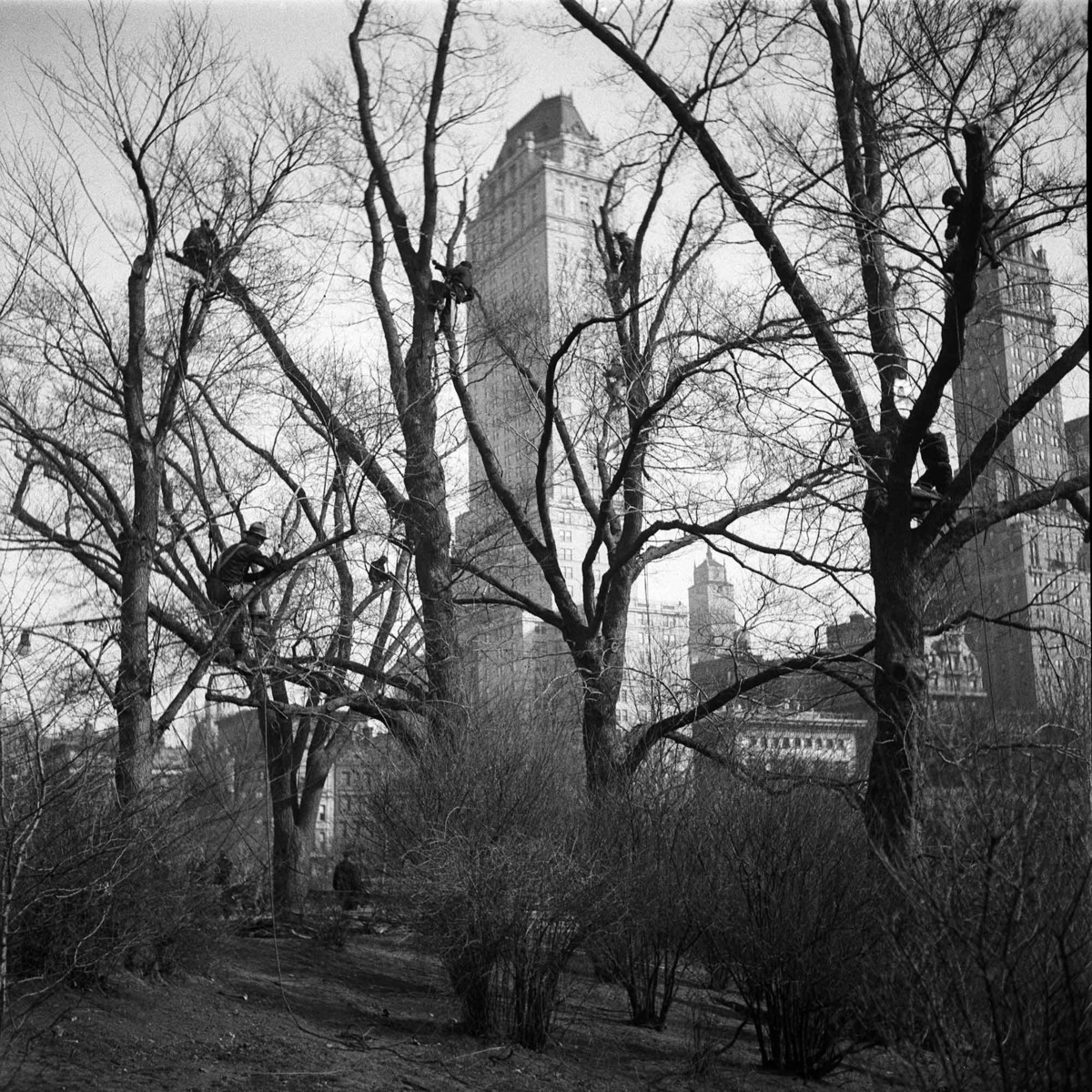
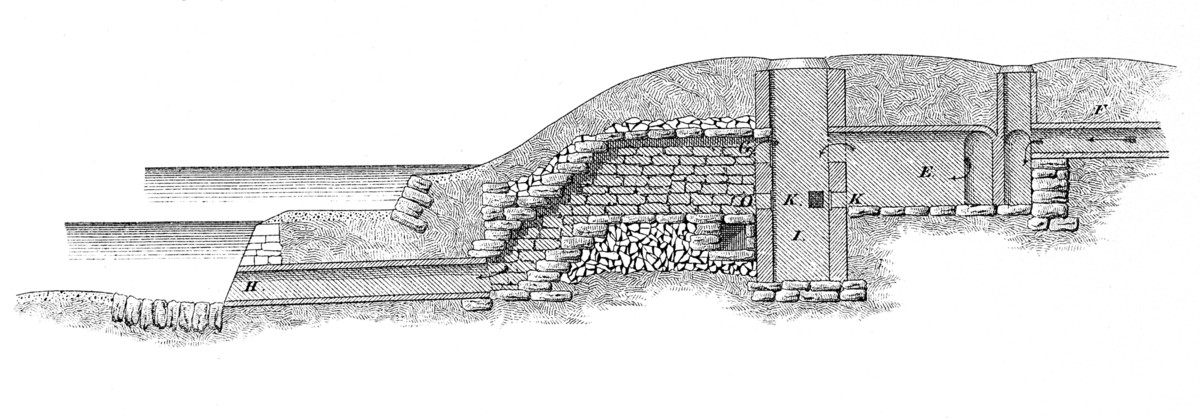

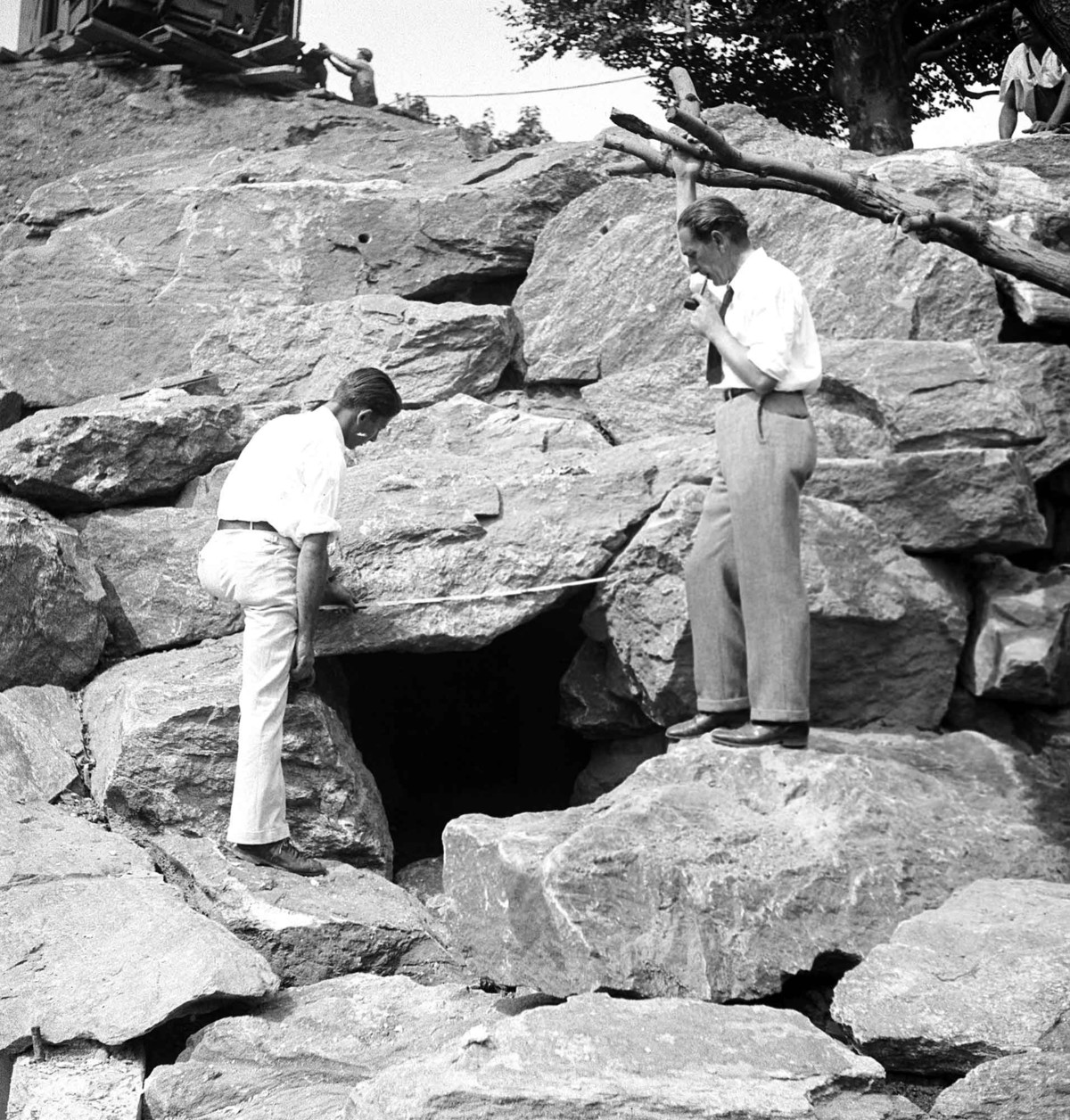
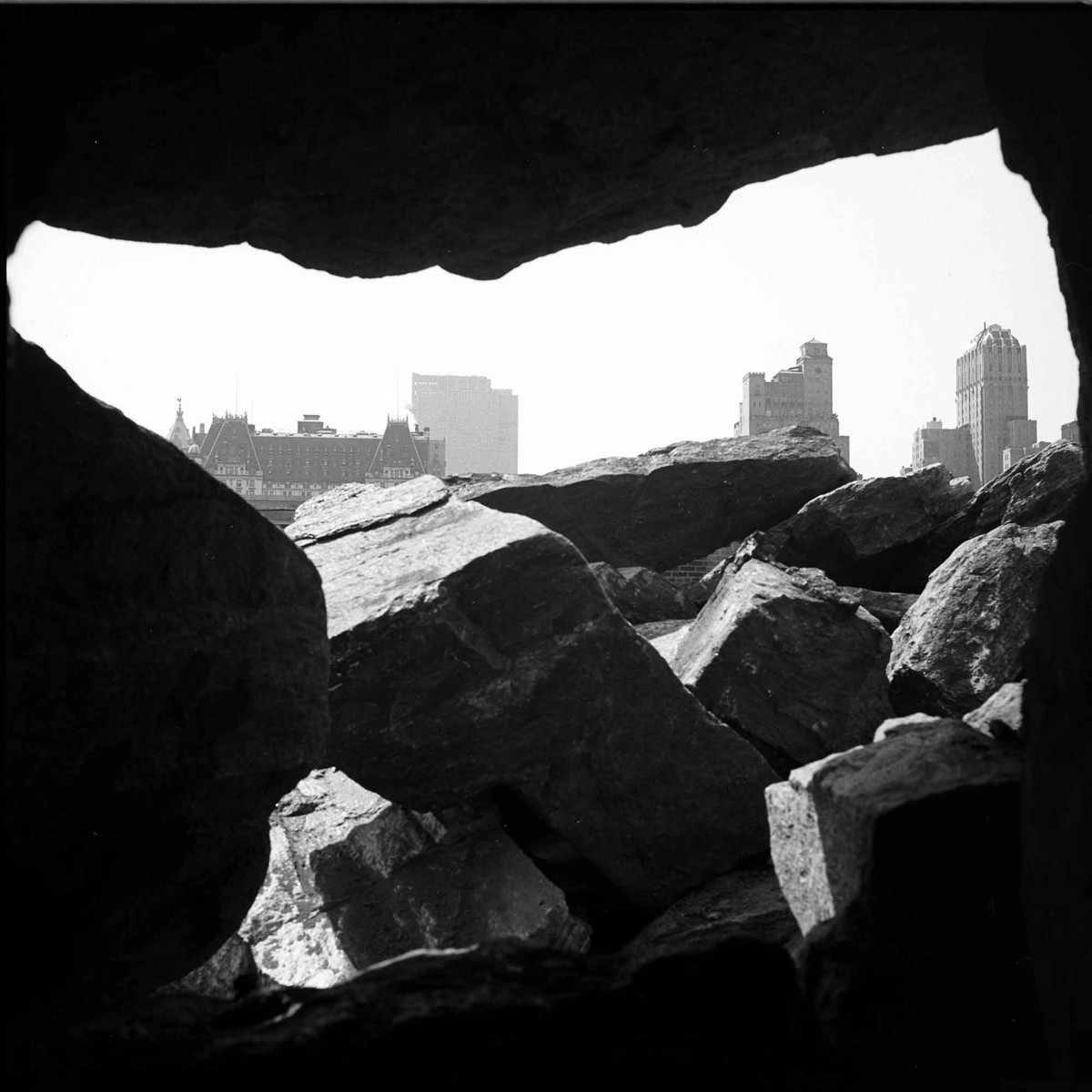
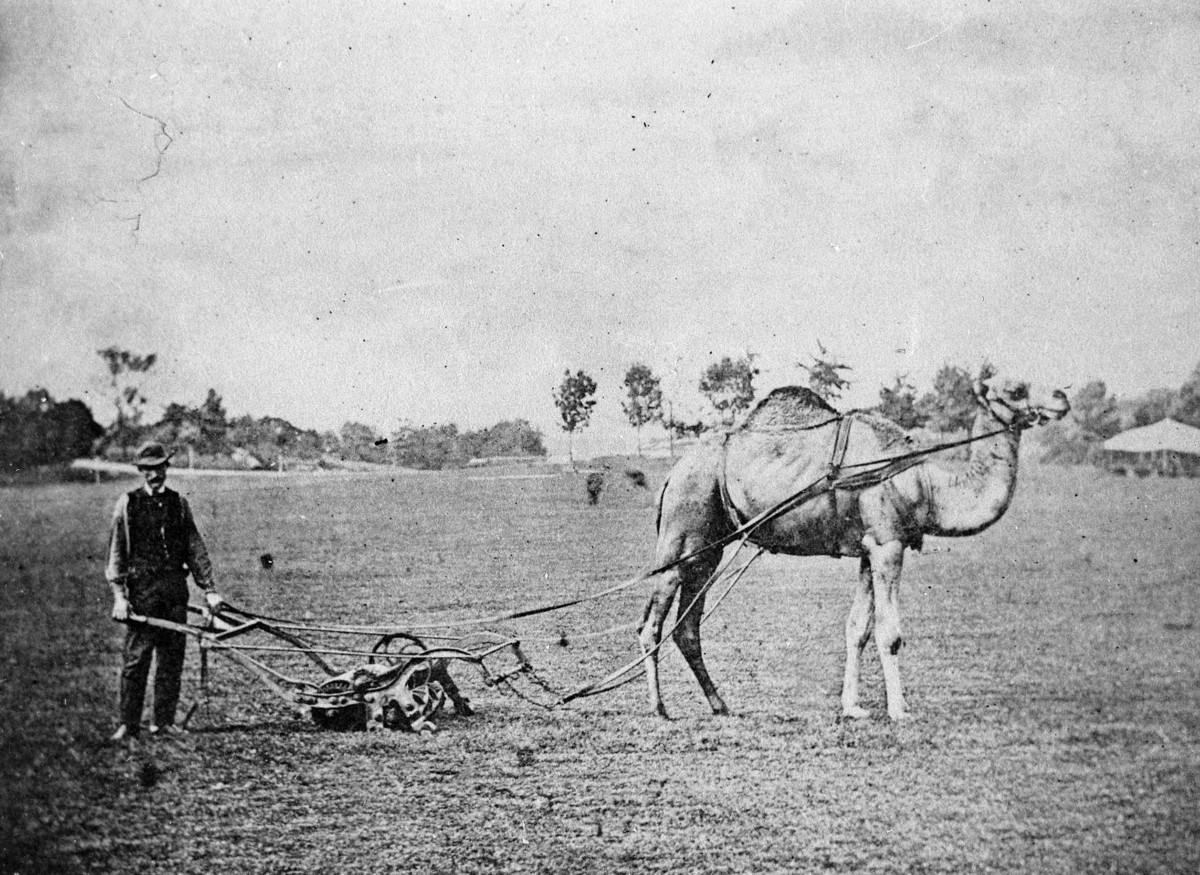
I would like to thank Anne Weber for her assistance and contributions as well as Marie Warsh of the Central Park Conservancy and Christina Benson of the NYC Department of Parks and Recreation for their generous sharing of time, knowledge, and archives.
